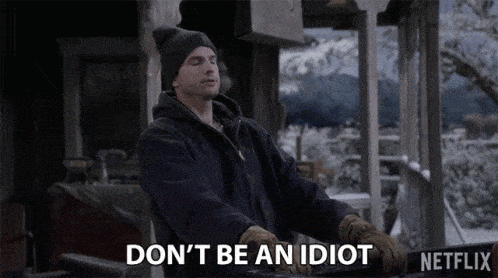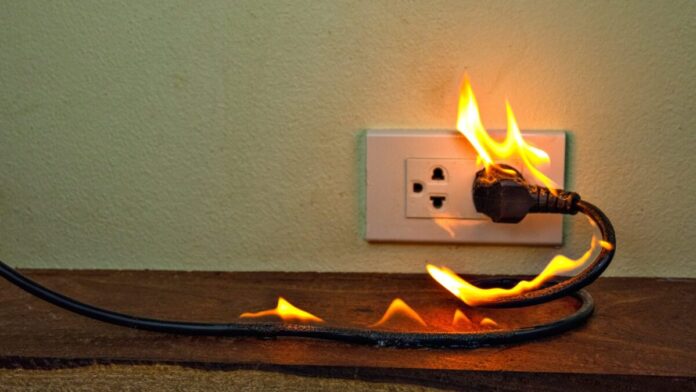Many people experience electrical problems and don’t know what to do. Thankfully, I am here to help.
There was once a time when my worst fear was a bad socket. I’d take one look at those traffic light wires and say, “No way. Mom, call an electrician.”
But in time, as independence bloomed and I began paying the bills, I got to see that having such knowledge, and knowing how to apply it, is a very important survival skill. I place emphasis on survival because all the gods won’t help you if something goes wrong when dealing with electricity.
Of course, I know that having to spend hours on Youtube watching tutorials can be a drag, especially when you can’t figure out the basics. Hence, I have helped you out with that part. First, we will discuss how to fix an electrical socket, then go over other common electrical problems and the simple solutions to them.
Electrical sockets can get damaged by being cracked or overheated. Don’t put off repairing damaged electrical sockets, because they are potentially lethal and it is not a difficult job to repair a damaged socket.
Providing that you are competent, you will have no problem repairing a damaged socket. It is a reasonably straightforward job.
Damaged Electrical Socket

Before you do anything, switch off the power at the main consumer unit for the circuit concerned. If you have removable fuses at your consumer unit, switch off the power at the consumer unit and remove the fuse for this circuit.
You must be certain that the socket has been isolated from the power supply before proceeding so make sure you test it. Fuse boxes are sometimes incorrectly labeled, so don’t take any chances so you don’t meet your maker earlier than expected. You can buy a tester very cheaply.
This is how to fix the electrical problem.
- Loosen the retaining screws on the faceplate of the socket in question. Put them to one side – making sure you don’t lose them. You can use masking tape to stick them to the skirting board for safekeeping.
- Pull the socket outlet away from the socket box so you can access the terminal connections on the back.
- With the face plate away from the socket box, you will be able to see three pairs of conductors: single or one pair of brown (live) conductors (red if you are working with old cables); single or one pair of blue (neutral) conductors (black if you are working with old cable; and single or one pair of green and yellow (earth) conductors.
- If the socket outlet is mounted in a metal pattress box, you might also see an earth tail connecting from the earth terminal on the socket to the earth terminal on the back of the metal box.
Related: Why Does Nigeria Still Lack Power Supply?

Damaged Electrical Socket Cont’d
- Using a small flat-head screwdriver undo each of the connection terminals at the top of the socket outlet so that you can release the conductors.
- Loosen the terminal connections on the new socket outlet (live, neutral, and earth).
- Insert the live conductors into the hole in the live terminal marked ‘L’. This will be the brown or red cable.
- Make sure that there is no exposed wire showing, and don’t twist the wires together. Tighten the retaining screw to make sure the wires are firmly secured.
- Repeat step 3 for the neutral cable fixing them into the neutral terminal, marked ‘N’. This will be blue or black.
- Make sure all your connections are made neatly into the correct terminals, with no stray wires, and that they are securely fastened.
- Ease the face plate back against the back box. Make sure the cables are not kinked and are sitting neatly inside the box so they won’t get trapped when you screw on the face plate.
- Line up the face plate and use the retaining screws to fasten it in place. Making sure the face plate is level as you tighten up the screws. Place a spirit level on top as you tighten up the screws alternately if you don’t have a good ‘eye’ for checking the level.
- Restore the power and test that your new electrical socket works – we recommend plugging in that electric kettle and having a well-deserved cup of cream for your effort.

Related: Price of Inverters in Nigeria
Repairing a damaged electrical socket is a fairly easy task as long as you are careful and follow the steps outlined above. Above all, be careful and take your time.

Light Switch Not Working
This electrical problem happens when a light switch is unreliable, your lights don’t come on when you click it, or a dimmer doesn’t dim the lights. This could be due to defective parts, a mistake in installation, or the age of the switch.
However, this is not as dangerous as the above, so no need to worry.
How to fix this electrical problem?
First, make sure the light bulb works by trying it in another light fixture. Make sure the circuit breaker is “on” and test an outlet near the light switch to see if power is going to the circuit. Does your dimmer work in any setting or not at all?
Just as fixing a socket, you can also replace a light switch by making you connect the right wires. See this short video for more details.
Related: Fuel dey find fuel: filling station goes in search of fuel to sell petrol to customers
Tripping Circuit Beaker
This electrical problem makes you sporadically lose power conduction to an area of your home. The danger level is high, often due to overloading a circuit.
How to fix this electrical problem?
Notice when the breaker trips. Is it immediately after starting a device, or when your HVAC system turns on? Try unplugging some devices and see if that works. You might need to upgrade your electrical system or add a circuit to your home.
High Electrical Bills
This electrical problem makes your electric bill higher than normal or much higher than it should be.
The danger level could either be low or high. It could be as mild as an appliance that uses a lot of energy. Alternatively, it could be due to damaged circuits or wiring issues which can cause a fire and sparks.
If this is the first month that the bill is high, try to think about what you did differently. You can expect your bill to go up if it’s the first hot month of the year because you’re using more air conditioning around the house. If it’s a random and unexpected spike, or your bill is consistently higher than normal, then that’s another problem.
You might be getting overcharged by your electricity provider, or you have a serious electrical problem in your house.
How to fix this electrical problem?
For random spikes or a consistently high electric bill, there are a few solutions:
- Fix your hot water system if there’s a leak
- Unplug chargers, electronic devices, and appliances when not in use
- Have an electrician inspect and fix your outlets and wiring
- Change your electric provider to a less expensive option
- Find out what appliances are causing your bill to go up
- Contact your electricity provider to ask about your bill
Related: Can it cook beans? — 48-year-old talented Nigerian man builds cooking stove that uses batteries
Electrical Shocks
This electrical problem (clearly) makes you feel a mild shock when you plug in or turn on a device.

The danger level could range from moderate to very high. It could either be a faulty appliance or faulty wiring. Since this could be due to faulty wiring, there is no safe way to troubleshoot this problem.
How to fix this electrical problem?
In this case, your safest option is to contact a professional electrician. Don’t tempt fate. Do not be foolish.

A Word From Battabox
Congratulations. At this point, you have some good information for tackling common home electrical problems that might occur. Be sure to study keenly, and most importantly, have someone stand by with a sturdy stick. Just in case.
I bid you good fortune.
If you have any questions, let us know below.





